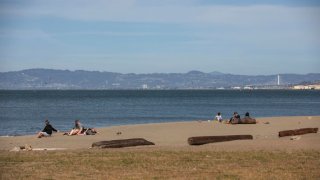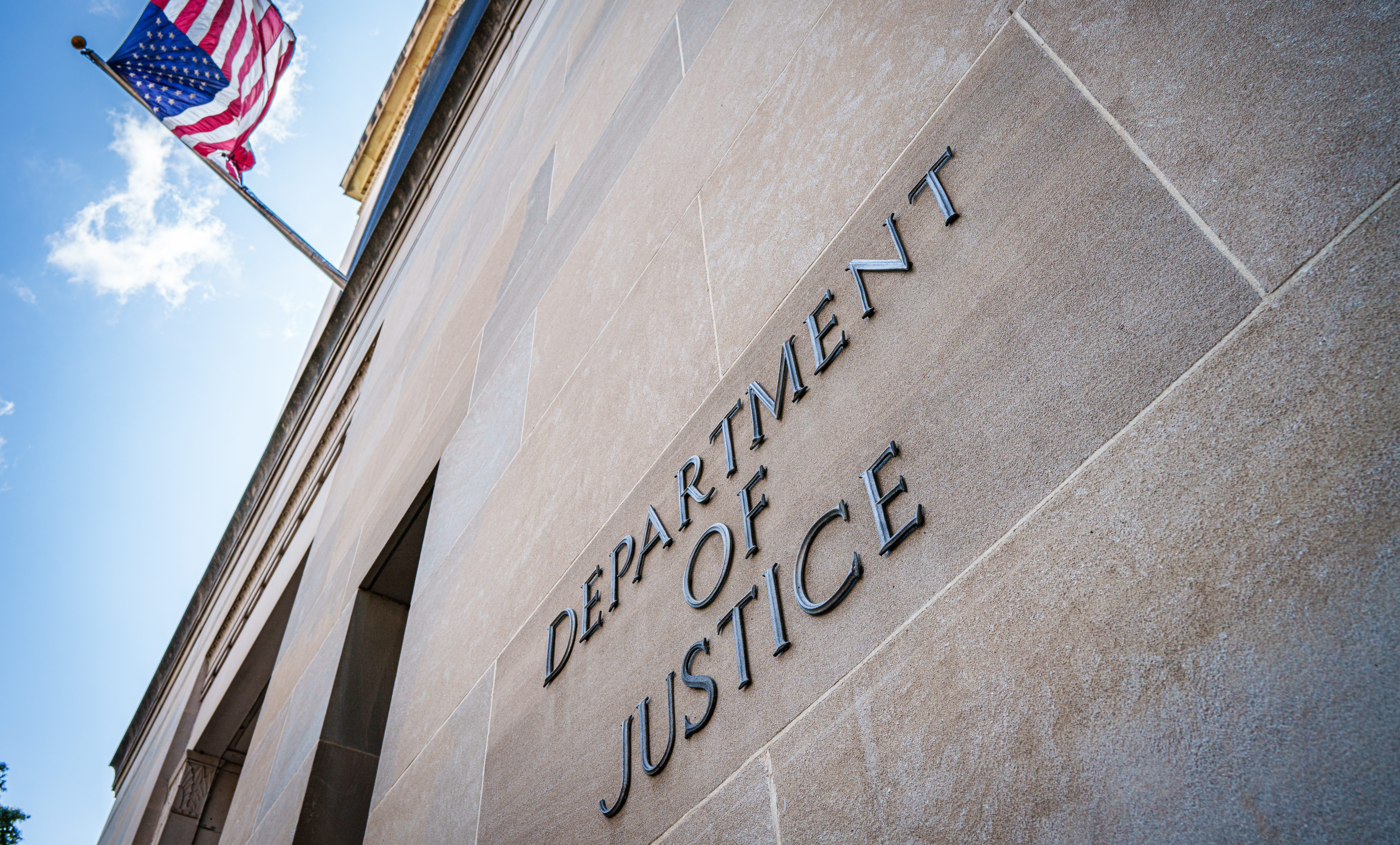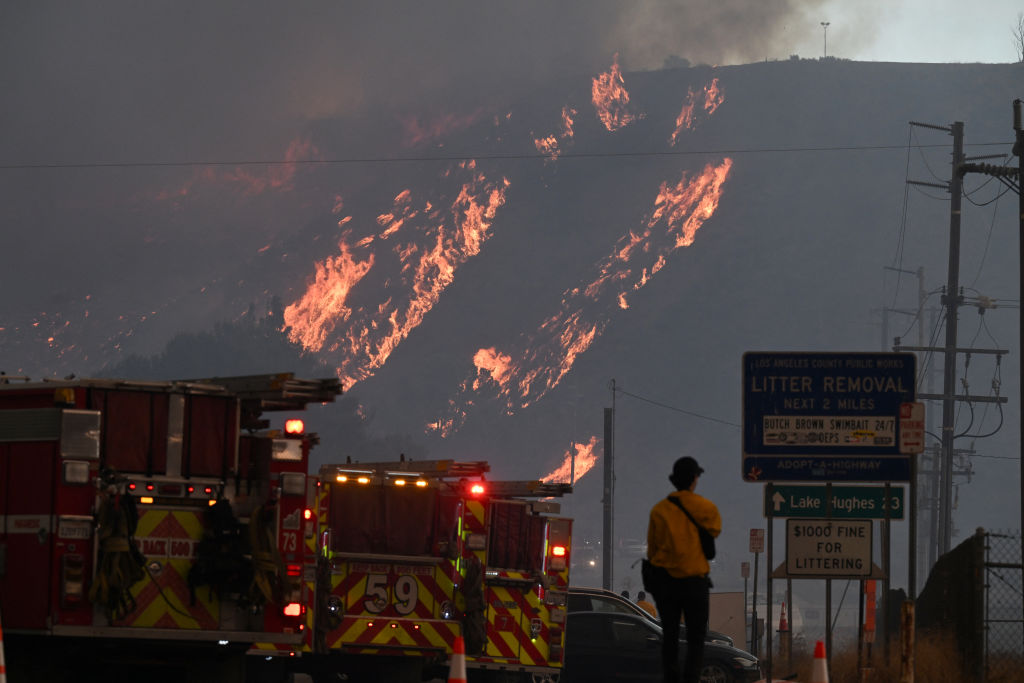
Beaches were mostly empty over the warm weekend as Californians heeded stay-at-home orders in anticipation that Gov. Gavin Newsom might ease some restrictions this week, while some rural communities announced plans to reopen on their own timetable.
In Orange County, where beaches were singled out for closure by the governor during the coronavirus pandemic, crowds were sparse as lifeguards and police patrolled and issued warnings to people to stay off the sand.
A Huntington Beach police spokeswoman said people were cooperating and no citations had been issued as of Sunday afternoon. In neighboring Newport Beach, police put out barricades and spoke with surfers to advise them of the closure, and said people were quick to comply.
Meanwhile Modoc County on the state’s far northern end allowed businesses to open in defiance of the governor’s shutdown rules amid the coronavirus pandemic, and Sutter and Yuba counties said they would follow suit.
There haven’t been any confirmed cases of COVID-19 among Modoc’s 9,000 residents, which Sheriff Tex Dowdy said was a deciding factor in allowing a “staged, safe” reopening of hair salons, churches, restaurants and the county’s only movie theater. Businesses could only have half the patrons, and customers must stay 6 feet (1.8 meters) apart. No problems were reported over the weekend, officials said.
In Alturas, Antonio’s Cucina Italiana will remain delivery- and takeout-only for the time being, owner Stan Yagi said Sunday.
“We had to scale everything back and we’re just not ready to reopen the dining room yet,” said Yagi, who has owned the restaurant since 1997. Some of the longtime employees have underlying health problems and he doesn’t want to put them at risk, he said.
California
Yagi said he appreciates the need for widespread shutdowns in less rural communities. But he understands the decision by his fellow business owners to defy the governor’s orders.
“They’re hurting and they need to open. We’re all mom and pop places up here and it’s been difficult,” he said.
Just up the road at the Brass Rail, customers were back at the bar — the only portion of the Basque restaurant open so far. After a six-week shutdown, people were eager to be back among friends and neighbors, owner Jodie Larranga.
“It’s been a long haul. We’re a small community,” she said Friday.
Elsewhere, a variety of businesses from restaurants to hairstylists in rural and more populated areas have opened their doors in individual acts of defiance. Yuba and Sutter counties — both north of Sacramento — plan to allow some businesses to reopen on Monday as long as they follow social distancing protocols.
Newsom acknowledged the building economic anxiety while repeatedly teasing the possibility the state could begin relaxing aspects of the restrictions this week.
“We are all impatient,” the governor said during his daily briefing Friday.
But the governor also noted that while hospitalization statistics are heading in a better direction, the state still has a growing number of infections and deaths. Nearly 2,200 Californians have died from coronavirus and more than 53,000 have been confirmed to have it, according to data compiled by Johns Hopkins University, though the number of infections is thought to be far higher because of a shortage of testing.
Coronavirus Deaths in Your City and State — and Across the US
These charts use daily coronavirus death data from Johns Hopkins University to show the seven-day moving average of deaths at the city, state and country level.
The impact of coronavirus varies enormously in the United States from one place to another.
Source: Johns Hopkins University.
Credit: Visuals by Amy O’Kruk/NBC, data analysis by Ron Campbell/NBC
Orange County beach cities argue that most of the tens of thousands of people who hit their shores during a heatwave last weekend did practice anti-virus safety measures and fumed that they were being unfairly singled out.
On Friday, a judge refused a request by Huntington Beach and others to block Newsom’s order to close the beaches. Judge Nathan Scott said he weighed the harm the closures caused the city and others, but the virus’s threat to public safety should take priority. He said he will consider the issue again May 11.
In Northern California, Santa Cruz County began on Saturday to close all beaches between 11 a.m. to 5 p.m. to let residents visit the beach in the early morning or sunset hours and deter visitors from driving long distances to hang out there.
Beaches are just the latest focus for frustrations over Newsom’s month-and-a-half-old order requiring nearly 40 million residents to remain mostly indoors. Businesses not deemed essential are closed until COVID-19 testing, hospital and death rates indicate the state outbreak is beginning to ease. Millions have been unable to work.
While Newsom has promised a cautious, phased reopening of the state, protesters don’t want to wait.
In Huntington Beach, police estimated 2,500 to 3,000 people gathered for May Day on a beachside street. In Sacramento, as police lined steps outside the Capitol, protesters on Friday waved signs that said “Defend Freedom” and broke into “U-S-A” chants. A few rallies took place Saturday, though attendance was significantly smaller.
For the vast majority of people, coronavirus causes mild or moderate symptoms. For some, especially older adults and people with existing health problems, it can cause more severe illness, including pneumonia, and death.
The fear is that the virus can be spread in close quarters by people who don’t known they’ve contracted it, and allowing too much contact too soon could lead to a second surge of cases.
___
Weber reported from Los Angeles.



